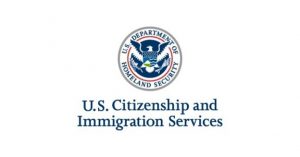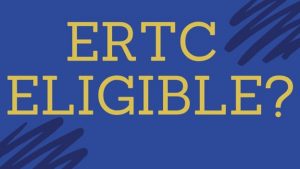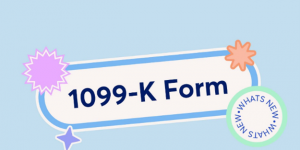 I9 Issues
I9 Issues
Have you wondered if you’re completing the I9 form correctly? Have you audited your I9s lately?
The top mistakes employers make on I9s:
- Allowing untrained staff to administer I-9s
- Not supervising new employees as they complete I9s
- Accepting unacceptable documents
- Accepting fraudulent documents, such as fake lawful permanent resident or Social Security cards
- Not recording the document title, issuing authority and expiration date or not recording this information correctly
- Making corrections without initialing and dating them
- Not conducting an internal I-9 audit
- Having untrained staff engage in the I-9 audit
The form is very confusing. Employers should ensure that they are completing every line on the document.
Other common mistakes include employees not signing and dating Section 1, employers not listing the date of hire in Section 2 in the certification clause, and employers not signing or dating Section 2.
Other mistakes stem from not being aware of how to complete I9s for foreign workers or recertifying foreign nationals.
The most frequent mistake occurs with the timing of the form. Section 1 must be completed on the first day of a new employee’s work (before the close of business). Section 2 must be completed before close of business on the third day (or sooner).
How do you certify remote workers? Have them come into the office for their first day, meet them at a convenient location, or if they are far way; you’ll need to r representative.
The minimum fine per individual for paperwork or technical violations increased from $230 to $234, while the maximum fine increased from $2,292 to $2,332. Fines for knowingly hiring or continuing to employ unauthorized workers went up as well. The range for a first offense went from $573-$4,586 to $583-$4,667.
Employers are encouraged to obtain additional guidance for complicated I-9 situations.
 ERTC Update
ERTC Update
What is the CARES Act and how it can help your U.S. company even if you already received a PPP loan? In 2020 and 2021 there were two rounds of PPP loans [Paycheck Protection Program] authorized by the U.S. Government under the CARES Act. They were implemented by the SBA, the Small Business Administration. The money was paid by the U.S. Department of Treasury. The whole point of the CARES Act was that businesses were given funds to pay out up to 8 weeks of payroll including benefits.
At this point, the PPP loans are not available anymore as the funds are depleted. However, the CARES Act does have another program for businesses that many do not know about. This program is called the “Employee Retention Tax Credit” or ERTC. The CARES Act did not allow employers with PPP loans to claim for the ERTC program. This ruled out tens of Millions of businesses that still needed help. However, in March 2021 Congress amended the CARES Act to provide further help for American businesses. It was named the “American Rescue Plan Act”. Specifically, this new legislation amends, expands, and enhances the CARES Act Employee Retention Credit ERC. This change allowed businesses that already received PPP loans to be eligible for ERTC refunds too. The time period for these ERTC refunds have shifted multiple times. Funds are available for part of 2020 and part of 2021.
To be more specific… The terms used are ERC and ERTC.
“ERC” stands for “Employee Retention Credit”
“ERTC” stands for “Employee Retention Tax Credit. Created by the CARES act, signed into law 3/27/2020. It is a COVID-19 economic stimulus program. Originally businesses had to choose between PPP or ERC.
On 3/1/2020, the IRS released Notice 2021-21, which updated the guidance to
- allow businesses to participate in both PPP and ERC
- do so retroactively, going back to 3/12/2020
- on 3/1/2021 the IRS published notice 2021-21, which updated the guidance
- on 8/1/2021, the IRS expanded the definition of an eligible employer to also include “Startup Businesses”
This means a business can claim these funds RETROACTIVELY for the periods mentioned above. The ERTC is called a “tax credit” but it can be received as a CASH payment from the IRS/US Treasury. There is no cap, i.e., NO DOLLAR LIMIT on the amount a business can receive, and there are NO REQUIREMENTS on how the money must be spent!
Originally the American Rescue Plan Act (ARPA) was just valid in 2020, but the program was extended into parts of 2021. The IRS set up a very specific methodology on how to optimize the two programs. To do this right, the applications must be filed by a tax expert or CPA who have specific insight into the client’s business, such as “was the business shut down” or “partially shut down”? Did they lose money? Quarterly payroll filings? There are such specific details to follow that a business may find it hard to accomplish.
If you’d like more information, contact our Accounting Manager, Rhonda Anderson at Rhonda@togetHRconsulting.com
 New CDC Guidance for COVID, What It Means For Employers
New CDC Guidance for COVID, What It Means For Employers
Employers with workers who test positive for COVID-19 should follow guidance from the U.S. Centers for Disease Control and Prevention (CDC), including its guidelines on quarantining and isolation, to minimize safety and legal risks. The guidance changed Aug. 11.
Read the full article here (MWE Attorneys): Article- COVID Updates and Employer Guidance
CDC recommendations here: New COVID Guidelines
 Form 1099K Update
Form 1099K Update
- What is Form 1099-K – Payment Card and Third-Party Transactions
Example: Payments received via Platforms like Wave, Square, Venmo, PayPal & Credit Card Companies
- Who gets Form 1099-K – New in 2022, payments in excess of $600. Prior to 2022, the threshold was $20k.
- How does this affect small owner’s – If you are receiving all your revenues from a third-party payment provider, you may be required to update your bookkeeping process from net receipts to gross revenue recognition. Net sales is your total income from sales less discounts, returns and allowances. Gross sales is total income from sales without subtracting any deductions.
- Why is Gross Sales Important – Form 1099-K includes the gross amount of third-party payments, including sales tax and payment processing fees. The IRS matches the sum amount of all 1099-K transactions to the total gross receipts on your tax return. Processing fees and refunds will need to be tracked separately.
- Why shouldn’t I accept nontaxable card payments – You should never accept nontaxable payments through any debit or credit card processing related to your business, otherwise you will receive a Form 1099-K for these payments. Example: A friend repaying you for concert tickets through Venmo.
 Are Your Employees Quietly Quitting?
Are Your Employees Quietly Quitting?
What is ‘quiet quitting’? Gen Z is ditching hustle culture to avoid burnout.
Tired of feeling like you’re working so hard with little reward, but don’t necessarily want to completely give up?
Try “quiet quitting,” or quitting the idea of going above and beyond at work, as TikToker @zkchillin put in his viral video that’s racked up more than 3 million views and nearly 500,000 likes. In the video, he explains how he sees quiet quitting, a term he said he recently learned. As he put it, “You’re still performing your duties, but you’re no longer subscribing to the ‘hustle culture’ mentality that work has to be your life. The reality is, it’s not. And your worth as a person is not defined by your labor.”
Irish goodbyes may be an acceptable way of exiting a party, but certainly not the workplace. And yet, the trend of “quiet quitting”—in which employees slowly detach from their jobs, often while looking for new work—is taking the internet by storm.
While it may be new to the internet, one HR leader who spoke to HR Brew said that employees have been doing this for a long time. Now it just has a name.
Just 21% of employees worldwide are engaged at work, down slightly from the 2019 high of 22%, an April Gallup report found. Perhaps more concerning: 57% are neither engaged nor thriving.
Look out and listen in. With symptoms such as decreased engagement and activity, quiet quitting can look somewhat similar to burnout. Upon noticing the signs, reach out and engage with employees, BEFORE they decide to leave, or not and just quietly quit.
This trend is more common than one might think— making it that much more important to know how to address it.
article taken from HR Brew – 8.15.2022